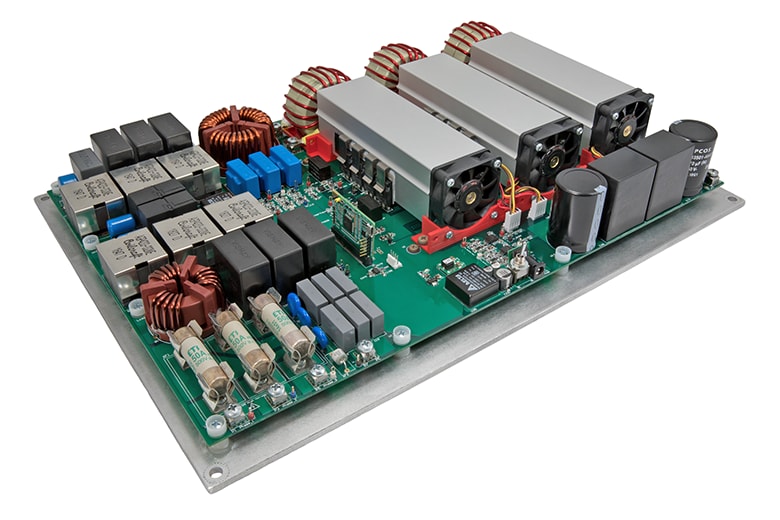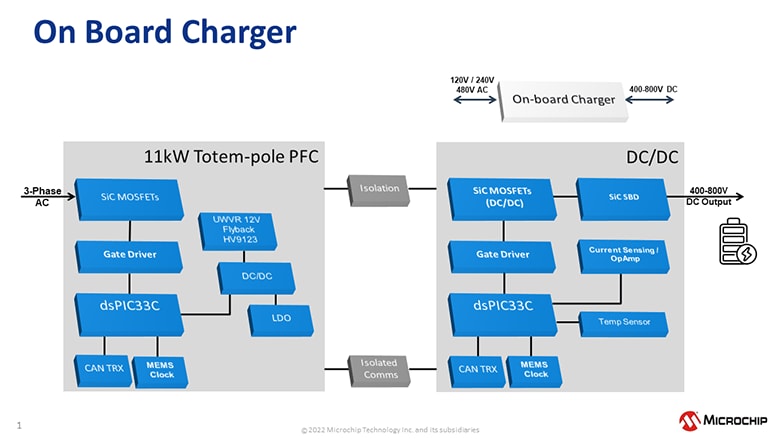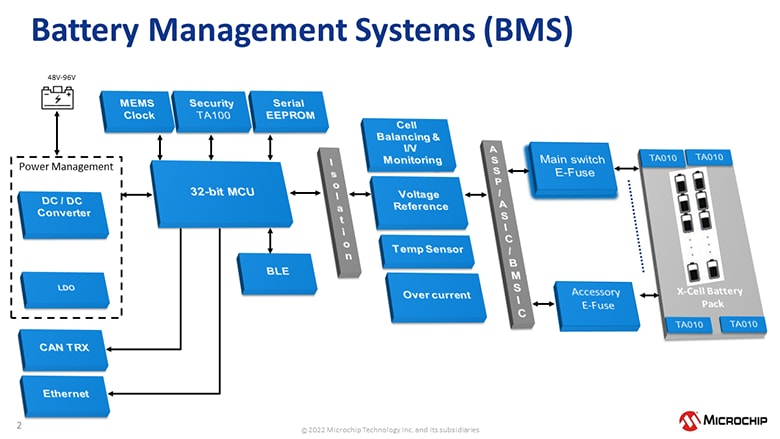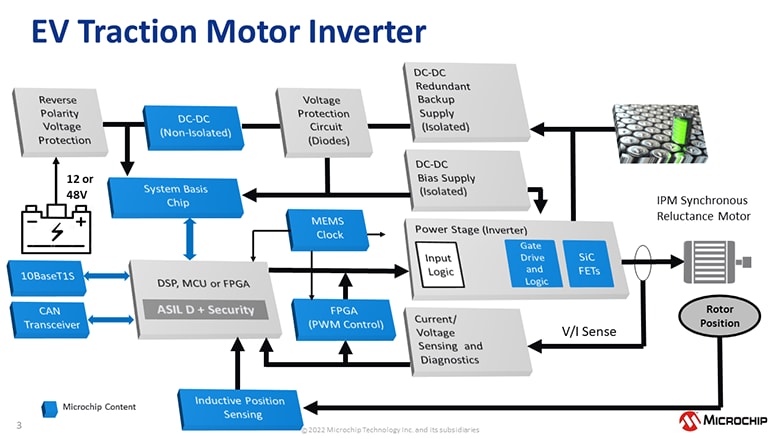How SiC Devices Keep the EV Market Moving Forward
You can trust us to take the guesswork out of switching to Silicon Carbide (SiC).
Electric Vehicle (EV) Technology Innovation in EV Charging
Designers of automotive subsystems constantly strive to find innovative ways to extend the range and reduce the charging time of EVs. In the pursuit of these goals, they have pushed silicon-based technologies close to their physical limits in terms of size, weight and power efficiency and are consequently turning to silicon carbide (SiC) to help them address these challenges. In comparison to silicon, SiC devices offer lower on-resistance and faster switching speeds and they have the ability to withstand larger voltages and currents at higher junction temperatures. These features, combined with their smaller size and improved efficiency, enable the greater power density that makes SiC a critical technology in many key EV applications. It is not surprising that the market for SiC power semiconductors is expected to grow five times its current valuation of $1bn, according to our estimates.
There are several emerging trends in EV applications that can benefit from our trusted SiC-based solutions. Let’s look across four elements in the EV charging infrastructure:
- EV charging stations
- On-board chargers
- Battery Management Systems (BMS)
- Motor power control units
EV Charging Stations
The main features of the three levels of EV charging stations are summarized in Figure 1.
|
AC Level 1 |
AC Level 2 |
DC Fast Charge |
Voltage |
120v 1-phase AC |
208V or 240V 1-phase AC |
208V or 480V 3-phase AC |
Amps |
12–16 |
12–80 (typ. 32) |
< 125 (typ. 60) |
Charging Loads (KW) |
1.4–1.9 |
2.5–19.2 (typ. 7) |
< 90 (typ. 50) |
Charge Rate |
3–5 miles added per hour |
10–20 miles added per hour |
80% charge in 20–30 minutes |
Figure 1: EV Charging Levels
A critical safety component in level 1 and level 2 chargers is the Solid-State Circuit Breaker (SSCB) that sits between the AC input and the vehicle charging connector. SiC is a great fit for this application because of its high-voltage fast-activation and rugged avalanche performance. Level 3 chargers can benefit from our 700V and 1200V discrete SiC devices and modules and from our MSCSICPFC/REF5 3-phase Vienna Power Factor Correction (PFC) reference design (Figure 2), which achieves 98.6% efficiency at 30-kW output power.

Figure 2: oUR Vienna PFC Reference Design
On-Board Charger
The on-board charger in an EV consists of an AC to DC PFC front-end and an isolated DC-DC converter (Figure 3). Here, bi-directional 3-phase 11 kW/22 kW and 7 kW/11 kW (single/three-phase) is an emerging trend because bi-directional functionality is required to provide supplemental grid power with power factor stabilization. Our SiC discrete MOSFETs, in a choice of through-hole and surface-mount package options, are ideal for on-board charging applications and they are also suitable for use in the DC-DC down converters that provide power to lower voltage vehicular systems.

Figure 3: On-Board EV Charger Design
Battery Management System (BMS)
The BMS accurately measures current, voltage and temperature of a multi-cell battery and must comply with Automotive Safety Integrity Level (ASIL) specifications for primary (accuracy) and secondary paths (overcurrent/safety/redundancy). It uses a shunt to measure current over a wide range (10A to 3000A). It measures high-voltage buses and cell voltages regularly while actively monitoring cell temperature using high-accuracy temperature sensors. As the number of cells in battery packs increase, Analog-to-Digital Converters (ADCs) with more channels and higher sampling rates are needed to help improve system efficiency and provide faster fault response. This additional functionality means that the role of the protection fuse is critical and, with a limited selection of 800V automotive-grade electromechanical relays that can operate reliably at higher voltages and temperature, our SiC MOSFETs with industry-leading avalanche performance are a better choice for implementing E-Fuses compared to a traditional electromechanical method.

Figure 4: EV BMS
Traction Inverter/Motor Power Control Unit
The motor drive system in an EV consists of an electric motor and motor control unit/inverter. The inverter converts the DC voltage from the battery system to the AC current required to drive the motor. It is estimated that power semiconductors account for 30–40% of the cost in a motor driver system. Designers can optimize costs by leveraging the greater power density, efficiency, operating temperatures and smaller form factors provided by ourSiC discrete devices.

Figure 5: EV Traction Inverter
Our SiC Value Proposition
We have a broad and growing range of SiC die, discrete, module and digitally programmable gate driver solutions, which make up part of our comprehensive solution for EV designs. This helps designers adopt SiC into their designs with ease and confidence. Our SiC portfolio provides an unrivaled degree of ruggedness and performance to minimize field failures and eliminate the need for redundancy in subsystem designs.
We are also acutely aware that high-performance SiC components require advanced packaging for their benefits to be fully realized which is why we house our products in a low-inductance packages. Our solid record in automotive applications, sustainable business model, secure supply chain and continuous commitment to innovation allows us to develop long-term partnerships that can grow and thrive. You can trust us to help you make the switch to SiC in your EV applications.
Visit our SiC web page to learn more.
